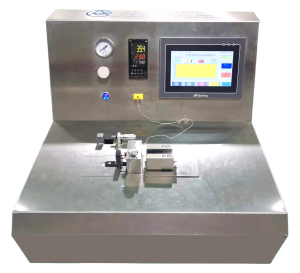A catheter is a thin, flexible tube that is inserted into the body for medical procedures such as drainage, injection, or monitoring. The tip of the catheter is an essential part that determines its functionality and effectiveness. The bevelled tip catheter is a type of catheter with a slanted or angled edge that allows easier insertion into the body. The bevelled tip also reduces the risk of trauma and damage to the tissues or organs. In this article, we will discuss how to make a bevelled tip catheter.
The bevelled tip catheter is made from various materials, including plastic, silicone, and rubber. The manufacturing process starts with the selection of the appropriate material and size for the catheter. The catheter’s diameter is critical, and it varies depending on its intended use. For example, a urinary catheter has a larger diameter than a peripheral intravenous catheter.
After selecting the appropriate material and size, the manufacturing process proceeds to the shaping of the catheter. The shaping process involves heating the material to make it malleable and then molding it into the desired shape. The bevelled tip is created by cutting or grinding the slanted edge at the end of the catheter.
The cutting or grinding process requires precision and accuracy to ensure that the bevelled tip is of the correct size and angle. The angle of the bevelled tip depends on the purpose of the catheter. For example, a larger angle is required for a catheter that will be used to access blood vessels or the spinal cord. On the other hand, a smaller angle is suitable for a catheter used for drainage or irrigation.
To achieve the correct angle and size of the bevelled tip, several methods are used. One of the most common methods is the use of a grinding wheel. The grinding wheel is a rotating disc with abrasive particles that remove material from the catheter’s end to create the bevelled tip. The grinding wheel can be adjusted to achieve the desired angle and size of the bevelled tip.
Another method is the use of laser cutting. Laser cutting uses a high-energy beam of light to cut through the catheter’s end, creating the bevelled tip. Laser cutting is precise and can create bevelled tips with very small angles.
Once the bevelled tip is created, the catheter is polished to remove any rough edges and ensure a smooth surface. Polishing can be done using various methods, including chemical polishing, mechanical polishing, or electrochemical polishing.
After polishing, the catheter is inspected for any defects or irregularities. The catheter must meet strict quality control standards to ensure its safety and effectiveness. If any defects are found, the catheter is rejected and sent back for further processing or disposal.
In conclusion, the bevelled tip catheter is an essential medical device that requires precision and accuracy in its manufacturing process. The process starts with the selection of the appropriate material and size for the catheter, followed by the shaping process to create the bevelled tip. The bevelled tip is created by cutting or grinding the catheter’s end to achieve the desired angle and size. Once the bevelled tip is created, the catheter is polished to ensure a smooth surface and inspected for any defects or irregularities. The bevelled tip catheter is a critical tool in modern medicine that enables various medical procedures to be performed safely and effectively.



